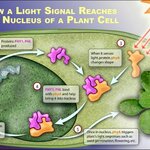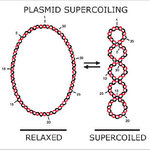Science category landing
Life Sciences

A variant of a gene involved in communication among brain cells has a direct influence on alcohol consumption in mice, according to a new study by scientists supported by the National Institute on Alcohol Abuse and Alcoholism (NIAAA), part of the National Institutes of Health (NIH), and the U.S. Army.
Scientists do not know yet whether a similar gene variant, with a similar effect on alcohol consumption, exists in humans.
Known as Grm7, the gene encodes a receptor subtype that inhibits the release of glutamate and other neurotransmitter molecules that brain cells use to communicate with one…

Most of us take it for granted that plants respond to light by growing, flowering and straining towards the light, and we never wonder just how plants manage to do so. But the ordinary, everyday responses of plants to light are deceptively complex, and much about them has long stumped scientists.
Now, a new study "has significantly advanced our understanding of how plant responses to light are regulated, and perhaps even how such responses evolved," says Michael Mishkind, a program director at the National Science Foundation (NSF). This study was in the November 23, 2007 issue of Science.
By…

“When biologists talk about the ‘Battle of the Sexes,’ they often tacitly assume that the battle is between persistent males who always want to mate and females who don’t,” says Jakob Bro-Jørgensen of University of Jyväskylä in Finland. “However, in topi antelopes, where females are known to prefer to mate with males in the center of mating arenas, we’ve found a reversal of these stereotypic sex roles.”
The classical view of sexual conflict holds that males, for whom reproducing is cheap, will mate as much as possible. On the other hand, females, who must pay a heftier price, are choosier…

Mutant mice could provide genetic clues to understanding incurable human sight loss resulting from retinal degeneration. Research published in the online open access journal Genome Biology uncovers a role for microRNA in retinal disease, and may point the way to future therapies.
A team from the Trinity College Dublin and the Sanger Institute, Cambridge (UK), led by Dr Arpad Palfi and Dr Jane Farrar of the Smurfit Institute of Genetics, Trinity College Dublin used mutant mice that model the human eye disease retinitis pigmentosa (RP). The researchers compared these mice with wild-type mice,…

There is a new twist on the question of how biological clocks work.
In recent years, scientists have discovered that biological clocks help organize a dizzying array of biochemical processes in the body. Despite a number of hypotheses, exactly how the microscopic pacemakers in every cell in the body exert such a widespread influence has remained a mystery.
Now, a new study provides direct evidence that biological clocks can influence the activity of a large number of different genes in an ingenious fashion, simply by causing chromosomes to coil more tightly during the day and to relax at…

Newly launched nerve cells in a growing embryo must chart their course to distant destinations, and many of the means they use to navigate have yet to surface. In a study published in the current issue of the journal Neuron, scientists at the Salk Institute for Biological Studies have recovered a key signal that guides motor neurons – the nascent cells that extend from the spinal cord and must find their way down the length of limbs such as arms, wings and legs.
The Salk study, led by Samuel Pfaff, Ph.D, a professor in the Gene Expression Laboratory, identifies a mutation they christened…

Researchers writing in BMC Genomics reveal that the grapevine's gene expression analysis reveals two distinct molecular and functional phases that correspond with the green and red grape stages.
Researchers have reported the first biochemical evidence that reactive oxygen species accumulate during the color transition. Stefania Pilati and fellow researchers from the IASMA Research Center, San Michele all'Adige, Italy, investigated ripening Pinot Noir grapes (Vitis vinifera L.) to identify fruit ripening genes and investigate seasonal influences.
They found a core set of more than 1,400…

Sexy dads produce sexy sons, in the insect world at least. While scientists already knew that specific attractive traits, from cricket choruses to peacocks’ tails, are passed on to their offspring, the heritability of attractiveness as a whole is more contentious. New research by the University of Exeter, published in Current Biology, shows that attractiveness is hereditary.
The research team, based on the University of Exeter’s Cornwall Campus, focused on the fruitfly Drosophila simulans. They paired up males and females at random and found the length of time it took for them to mate ranged…

Three decades have passed since gene therapy pioneer William W. Hauswirth, Ph.D., and his colleagues at the University of Florida began work on a virus that could safely deliver corrective genes into living animals.
It’s been six years since a multi-university team used gene therapy to give sight to puppies born with a defect that causes blindness.
Now the gene-transfer technique is being tested for safety in people in a phase 1 clinical research study conducted by the University of Pennsylvania and the University of Florida with support from the National Eye Institute of the National…

Researchers are closer to understanding why humans differ so greatly from chimpanzees in the way they look, behave, think, and fight off disease, despite having genes that are nearly 99% identical.
Innovative research from the University of Toronto’s Centre for Cellular and Biomolecular Research has uncovered potential new explanations for these glaring differences. In comparing brain and heart tissue from humans and chimpanzees, U of T Professor Benjamin Blencowe and his team, including graduate student researcher John Calarco, have discovered significant differences in the way genetic…